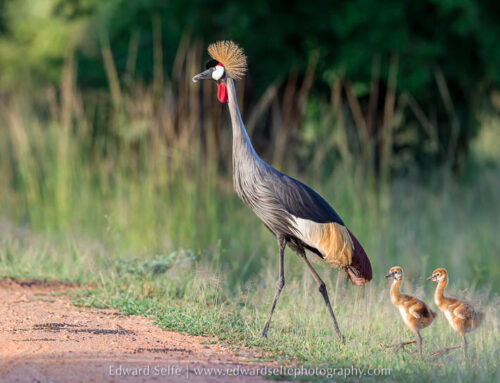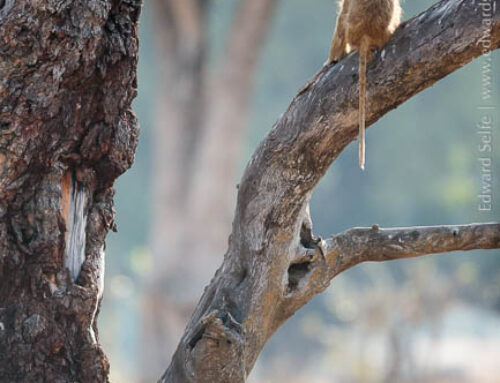Puku are a medium-sized, stocky antelope which make a living in the grassy dambos across Zambia and into the margins of Zambia’s neighbours. As with many of Africa’s antelope, they live in herds of females, youngsters and immature males, headed by a dominant territorial male. Being predominantly grazers, they thrive along the waterways in Luangwa where the best grass can be found.
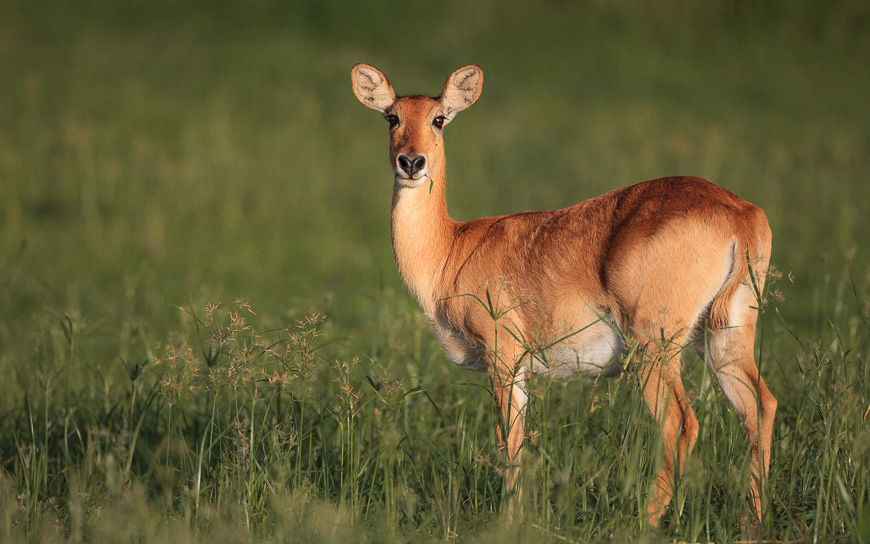
Puku are an elegant and engaging antelope which thrive in grassland areas.
Males carry distinctive lyre-shaped horns, which are thick at the base and whittled to a sharp point at the tips. They’re highly territorial, defending their patch vigorously against other prime males, and regularly challenging juvenile males within their herd. But it’s a solitary life for many, as males must defend their territories even when they have become depleted and the females have moved on.
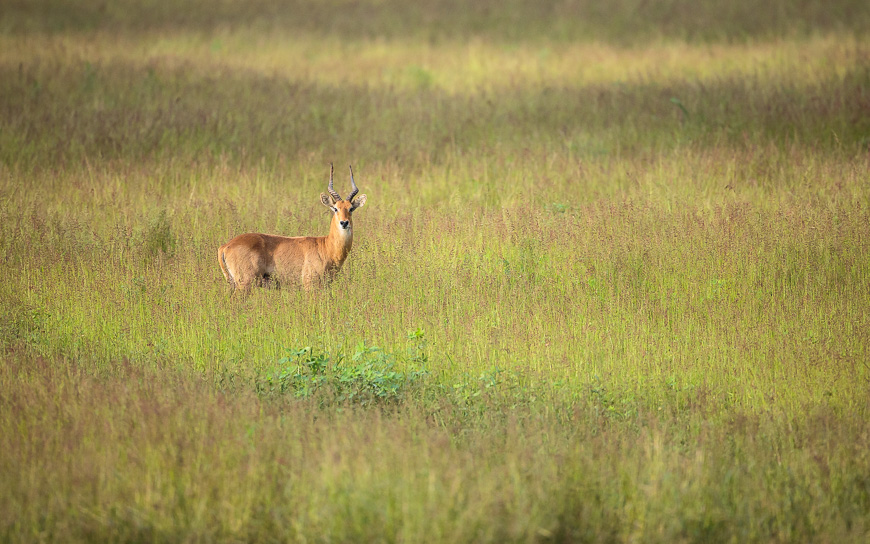
Puku rams are regularly found alone; carving out and defending a territory is a full time job, and relinquishing your post might lead to a coup!
Herds of puku grow in numbers as the dry season intensifies and the available grass diminishes. Among the herd will be youngsters of all ages, since puku breed and calve at any time of the year. While some antelope species flood the market with youngsters in a particular season, puku choose to birth singly, hoping to avoid the attention that a mass-calving season attracts. To avoid detection, a female will settle her new-born calf in one spot and leave it while she goes to feed; amazingly, they often choose an open pan, with no cover, and rely on the calf’s lack of scent and camouflage behaviour to protect it. Without scent to guide them, predators often walk right past.
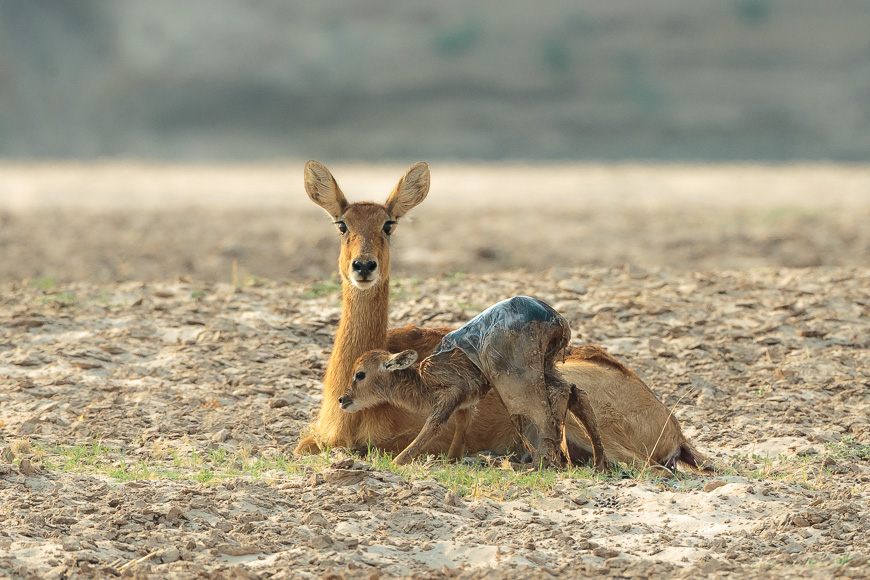
This calf was born 30 minutes earlier and was starting to get to its feet. The female was cleaning it and consuming the remaining afterbirth.
You’ll likely hear puku before you see them. Males call to advertise territorial status with a sharp, whistling blast, repeated 3-4 times in rhythmic succession. This call carries for a kilometre – even to our poor-quality ears – and is an impressive intensity of sound for a creature that rarely exceeds 90kgs.
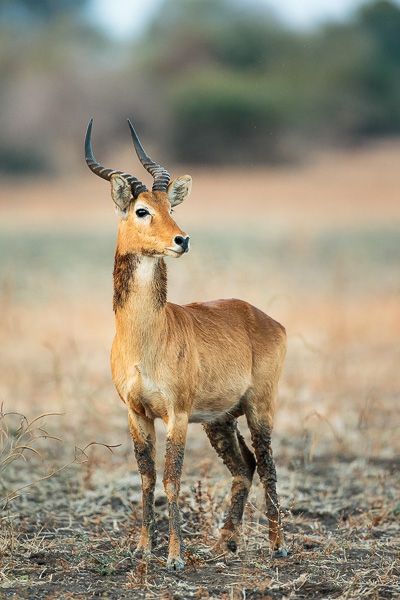
Having run through a small channel, this male puku turned to watch a leopard that was stalking through his territory.
All prey species have a warning call or alarm sound of some type; small birds must alert others to the presence of mongooses just as large mammals such as deer must warn of tigers in the Indian jungle. But it is the reliability of pukus’ warning calls that so excites wildlife professionals who work with them on a daily basis. These simple – perhaps even drab – antelope have, by far, the most developed sense of danger. They are astute like no other antelope, often detecting and responding to danger long before other prey.
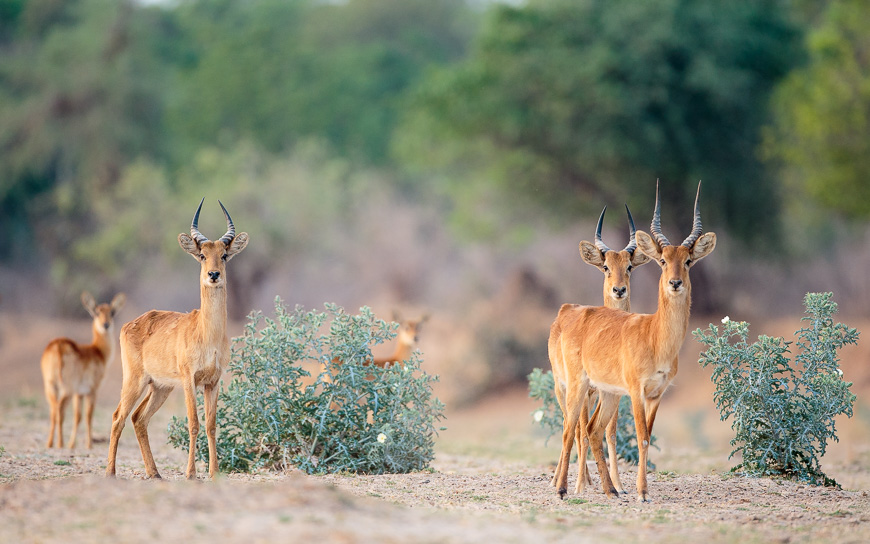
These subadult males were feeding alongside a breeding herd at a time of year when resources were scarce.
Stealthy leopards, stalking along the bottom of a drainage channel, will notice and avoid monkeys that may bark in warning from nearby trees. But they can’t avoid alarming small birds, such as firefinches and waxbills, which lift off in terror as the cat approaches. Their alarm calls may be localised, but nearby puku will raise their heads and watch. By contrast, impala will continue to feed, totally unaware!
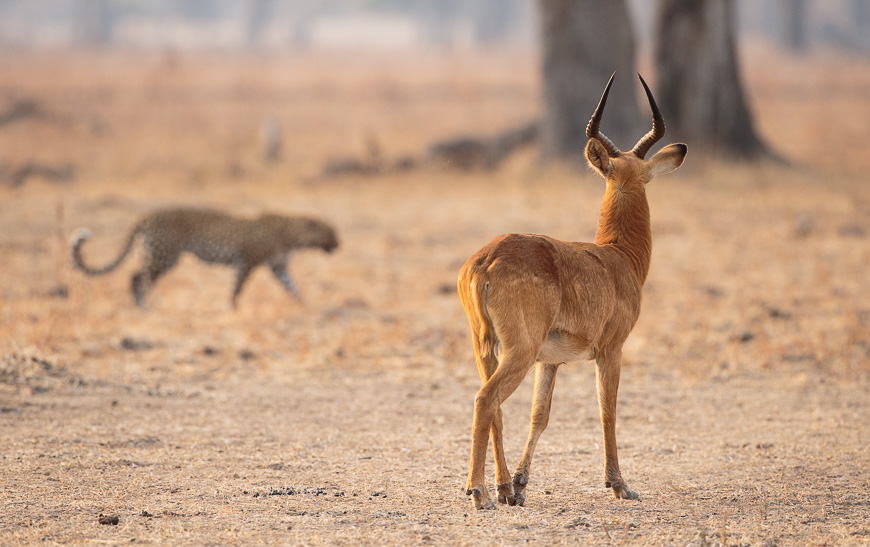
Knowing that a leopard which can be seen is not a threat, this puku ram observed this female closely as she wandered through his territory in the late afternoon sunshine.
That is not to say that they are immune to predation – far from it; leopard and lion regularly kill puku, though leopard kills are much more likely to be impala which are more plentiful and less alert. Unlike impala though, puku are prepared to flee into mud and water to escape a predator. Muscular legs and wide split hooves prevent them sinking too deep, and this unexpected evasion is sometimes enough to deter a pursuer.
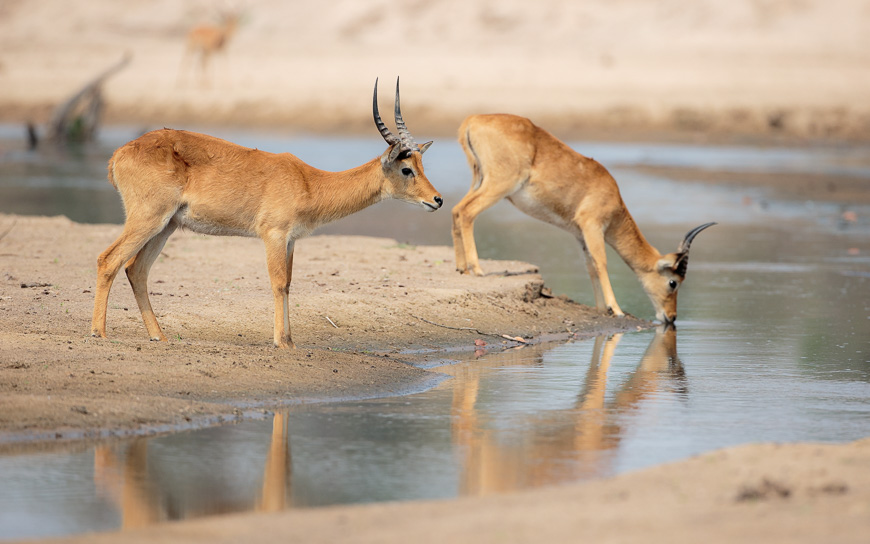
Always cautious, puku drink carefully from the river late in the dry season.
One morning drive, I heard a single puku’s warning cry – a repeated, airy version of the territorial call – from behind a line of trees. Excited at the prospect of a cat sighting, I approached carefully and scoured for signs of alarm from other creatures to help me home in on the source. It turned out that the puku had seen an eagle descend from a tree and skewer a snake below. The puku was not threatened by the eagle, but had responded to the violence it had observed, even from 500m away.

This male puku stands alert on the edge of the Kauluzi stream in the Nsefu Sector of South Luangwa National Park.
This ability to detect and locate danger from long range makes puku the most reliable and exciting antelope to work with. So many of the most best encounters I have enjoyed in the bush have begun with a puku’s warning call.
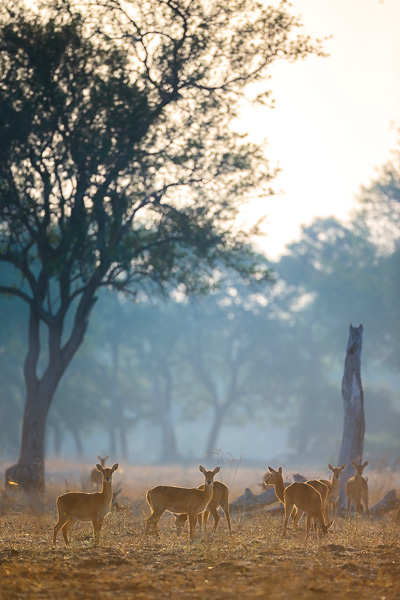
Puku against the soft, blue morning light of the Nsefu Sector’s southern boundary.


